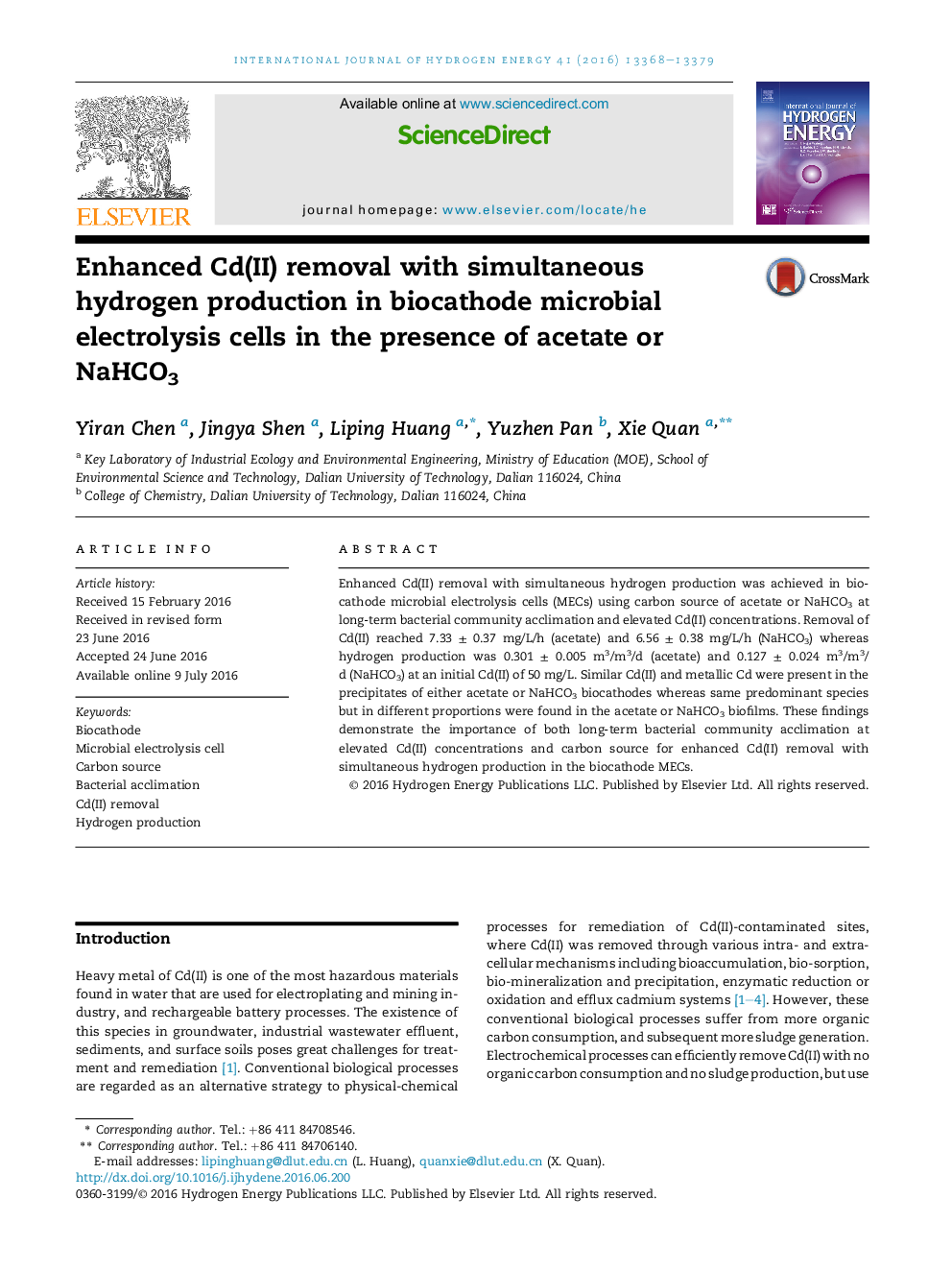| Article ID | Journal | Published Year | Pages | File Type |
|---|---|---|---|---|
| 1276450 | International Journal of Hydrogen Energy | 2016 | 12 Pages |
•Enhanced Cd(II) removal and hydrogen production were achieved in biocathodes.•Carbon source of acetate or NaHCO3 affected system performance.•Initial Cd(II) level and external voltage affected Cd(II) removal.•Acetate biofilms shared the same dominance with NaHCO3, but in various proportions.
Enhanced Cd(II) removal with simultaneous hydrogen production was achieved in biocathode microbial electrolysis cells (MECs) using carbon source of acetate or NaHCO3 at long-term bacterial community acclimation and elevated Cd(II) concentrations. Removal of Cd(II) reached 7.33 ± 0.37 mg/L/h (acetate) and 6.56 ± 0.38 mg/L/h (NaHCO3) whereas hydrogen production was 0.301 ± 0.005 m3/m3/d (acetate) and 0.127 ± 0.024 m3/m3/d (NaHCO3) at an initial Cd(II) of 50 mg/L. Similar Cd(II) and metallic Cd were present in the precipitates of either acetate or NaHCO3 biocathodes whereas same predominant species but in different proportions were found in the acetate or NaHCO3 biofilms. These findings demonstrate the importance of both long-term bacterial community acclimation at elevated Cd(II) concentrations and carbon source for enhanced Cd(II) removal with simultaneous hydrogen production in the biocathode MECs.
